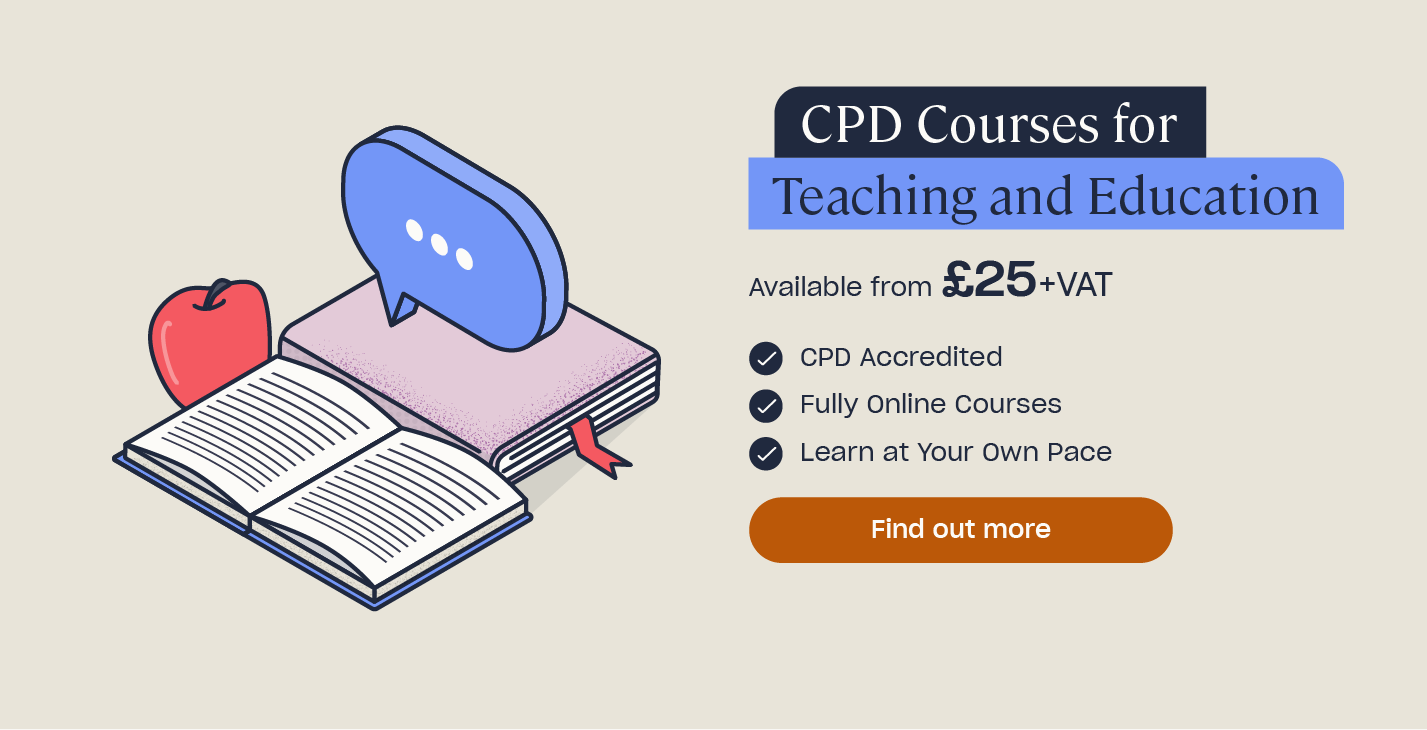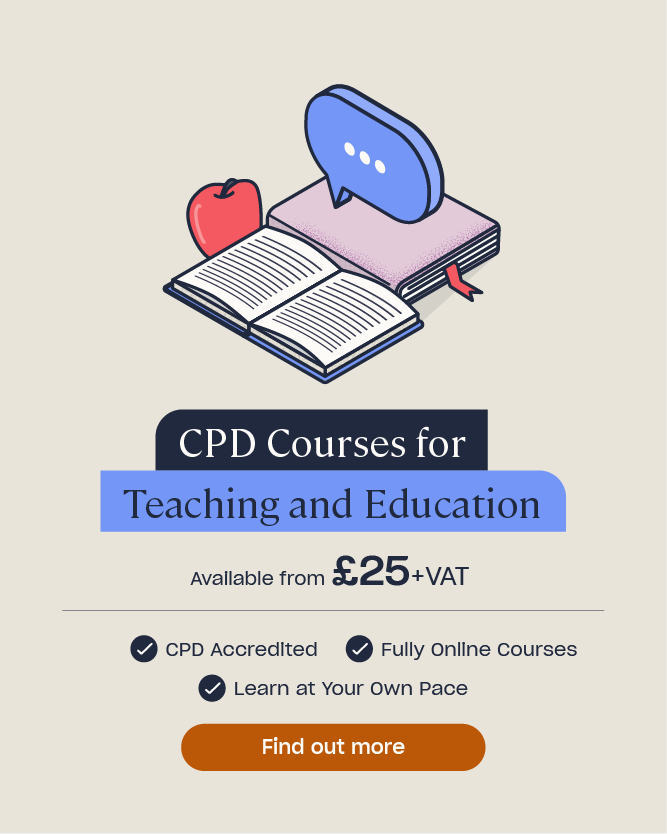What is the Role of Artificial Intelligence in Education?
The use of artificial intelligence (AI) as a business tool is continuing to rise, improving efficiency and simplifying processes. AI can bring many benefits to the education sector, transforming the way in which pupils learn and educators teach. Research by the Department for Education found that 42% of primary and secondary teachers had used generative artificial intelligence (GenAI) in their role (November 2023); meanwhile, 74% of online 16-24 year olds in the UK have used a GenAI tool. It is clear that AI is going to make its way into education, and so it is important that educators understand how to use it safely and effectively.
In this article, we will outline what role artificial intelligence can play in education with examples, explain some of its key benefits and disadvantages and discuss what the future of AI in education might look like.
What is Artificial Intelligence in Education?
The Cambridge Dictionary defines artificial intelligence as “the use or study of computer systems or machines that have some of the qualities that the human brain has”. Examples of these qualities include “the ability to interpret and produce language in a way that seems human, recognise or create images, solve problems and learn from data supplied to them”. Ultimately, the main objective of AI is to optimise routine processes by improving both the speed and efficiency at which they are usually done.
The Department for Education is keen to understand the views and experiences of generative artificial intelligence (GenAI) of those working in education and held a call for evidence in 2023. They are investigating how GenAI can be used in education to improve learning experiences for students and make teachers’ jobs easier. GenAI is defined as “an artificial intelligence system that generates text, images, audio, video or other media in response to user prompts” by the Alan Turing Institute.

AI is already being used to reduce administrative tasks in some schools. Similarly, there are AI-generated tools available online which are intended to be used by those working in education. We will look into this in more detail throughout the article.
As AI is a relatively new technology, further research and development is required to understand how it can be best used in education. It’s important to note that the UK government is clear that AI will not be used to replace teachers, and students will not be taught by AI. Instead, the aim is to develop AI to serve teachers better. Any use of AI must be closely monitored and include expert human involvement to ensure the outcome is as intended.
Artificial Intelligence in Education Examples
Artificial intelligence has the potential to revolutionise teaching for the better. It can be used in education for many different purposes, with new capabilities continuing to be discovered as AI develops. It can be used for the benefit of both students and teachers.
Examples of how AI can be applied to education include to:
- Automate administrative tasks, such as the marking and grading of work.
- Provide personalised learning and support. Teachers could use AI to design personalised learning paths for each student, taking into consideration their learning preferences, strengths and weaknesses.
- Provide personalised feedback to students. Education professionals should provide students with explanations of how to improve their work, but this process can be time-consuming. Some students may find that the feedback they receive from their teacher or tutor can be critical and feel embarrassed by it. They may not make use of or engage with the feedback. Instead, AI-generated feedback is more efficient and can be an effective format for students who struggle with responding to constructive feedback.
- Expand online learning opportunities. For example, teachers could use AI to quickly create educational games, quizzes or other activities which assess and teach students. This virtual learning can create a personalised learning experience by monitoring the responses of the student and adapting the task to be easier or more challenging depending on whether they get something right or wrong.
- Create course and lesson plans. AI-generated plans can be created by inputting the information that needs to be covered during a course or lesson. These can be tailored specifically to a class, student or syllabus.
- Identify where students may need extra help. AI can analyse data including assessments and use this to identify gaps in knowledge and skill.
- Provide a chatbot to answer queries. Chatbots may be suitable at universities, where students can ask questions and immediately get the information they need. They may give information about student services, courses or admissions.
- Give education professionals a “virtual assistant” which can complete computer-based tasks and reduce their workload.
- Give students their own “virtual tutor”. This would be personalised entirely to the needs of the individual and provide them with additional support alongside their teacher.

Advantages and Disadvantages of Artificial Intelligence in Education
The use of AI in education is still relatively new, and so a comprehensive picture of the advantages and disadvantages of using the software isn’t yet clear. However, there are some clear benefits and potential risks which need to be considered if AI is to be used in an education setting.
Benefits of AI in Education
To expand on some of the points already touched on, the benefits of artificial intelligence in education include:
- It could massively reduce workloads by automating processes. Administrative tasks can be incredibly time-consuming, but AI can be used to complete them instead. This will allow education professionals the opportunity to focus and dedicate more of their time to delivering effective teaching and supporting their students. Automating administrative tasks can also reduce the time some teachers spend working out of hours, improving their work-life balance.
- Personalised education and support can be given to students. Unfortunately, there often aren’t enough hours in the day for every teacher to offer each of their students comprehensive support which is tailored to them. AI can be used to supplement the existing support teachers can give and provide individualised learning and support. Learning can also be self-directed, which can be empowering for students.
- Due to the personalisation of their learning experience, students are often more engaged. Tasks and explanations can be provided to them in a format that is most appropriate for their learning style and adapted to their level of understanding and skill.
- Teaching can be more creative, which also helps with student engagement. AI can provide new ideas, perspectives and ways of teaching a topic which a teacher may not think of themselves. This is more likely to be the case if someone has taught the same topic for numerous years and welcomes suggestions for alternative activities or teaching strategies.
- Equal access and opportunities are provided. AI can help to ensure that everyone is given the same opportunity to learn, regardless of their learning ability. For example, AI technology can quickly transcribe speech to text which can enable students with a hearing impairment to clearly understand. In particular, students with special educational needs and disabilities (SEND) and those for whom English is an additional language (EAL) will benefit from the capabilities of AI.
- Students are introduced to AI in the classroom which can greatly improve their understanding of the technology and allow them to adapt to its uses elsewhere, such as in the workplace. AI is a rapidly-evolving technology which is predicted to have a significant impact on workforce requirements in the near future. By teaching children how to use and interact with AI from a young age, they develop valuable skills that they can use later in life.

Disadvantages of AI in Education
The use of AI in education is not without risk. Where it is possible to manage this risk, education providers must have robust policies and procedures in place. Some of the potential disadvantages of AI include:
- A lack of understanding or inefficient training could result in education professionals misusing the tools. With any AI tool used, teachers must have oversight of what it is creating and how it is performing. There is a risk that some teachers won’t receive proper training and instruction in how to use this new technology, or those who are less tech-savvy may struggle to adapt their teaching to incorporate AI. As a result, some teachers may not appreciate that they need to be involved when AI is used and must ensure it is producing accurate, and the desired, results. For example, some teachers may assume that AI cannot get anything wrong and therefore may not review content which has had AI input. This could result in students accessing materials that aren’t correct.
- AI tools can be expensive to purchase and maintain. Schools and universities may not be able to afford costly AI technology which creates a barrier for some students. Access to the technology requires basic digital infrastructure, such as laptops, which may not be available to every student.
- Students could use AI to cheat in exams and to do their work. AI platforms such as ChatGPT can be used to answer questions and write content, amongst other uses. Students could use AI to formulate answers to assessment questions, and even to write an essay. We wanted to find out whether teachers could correctly identify when a student had used AI to write an answer to an exam question. We put this to the test and published our surprising findings here.
- AI-generated content and resources can contain biases and misinformation. AI learns from its source, which means that it can learn to be biased and unintentionally share inaccurate information.
- Students may receive less human contact and become too reliant on AI to educate them. With more opportunities and information available, students may develop concerning relationships with technology. There is a risk that someone might become overdependent on AI and retract from traditional methods of teaching in favour of using screen-based technology. Overuse of AI could also reduce students’ creativity, with the technology doing the work for them.
- There are concerns about how AI impacts privacy and security, with a risk that sensitive data could be shared. In order for AI to work effectively, information needs to be shared with it. Some of this data can be confidential and must be protected. Educational institutions will need to consider how they are going to use AI while protecting their students and staff.
Knowing that AI is used in their learning, students may try to use it for other purposes. There is a risk of young people accessing, or themselves creating, harmful or inappropriate online content through AI. For example, they may create or view deepfakes of their peers. Deepfakes are AI-generated fake videos which can include digitally manipulated content to make someone’s likeness replace that of another. Many deepfakes are pornographic.
Looking for a Course?
Teachers are already having to learn about the ways in which children are at risk due to their use of technology. To support those who work in education, we offer a range of CPD Courses for Teaching and Education. This includes Online Safety and Harms which explains the potential online risks and harms children face, how to recognise the signs that may indicate online harm or abuse and how schools can effectively address online safety.
Future of AI in Education
With AI already being introduced in many schools, colleges and universities, its use is only going to become more prevalent. Teaching students about digital life skills, including AI, allows them to enter the workforce and thrive, comfortable with how to use AI effectively and safely. The UK government is keen to focus on developing AI literacy in education and has invested up to £2 million in AI tools for Oak National Academy to develop free resources for teachers which use AI, such as quizzes and lesson planners.
For AI to be integrated and used successfully in education, experts and educators have highlighted the need for clear, best practice guidance. This should be provided by the government and tech industry and must be specific to the sector. It’s also essential that educators are able to keep up with the technology as it continues to evolve at pace, with new developments and updates required.

Alongside this guidance, teachers and other education professionals must have clear knowledge and understanding of the AI they use. Schools can prepare for the prominent future role AI is expected to play in education by ensuring that they deliver comprehensive training which explains to educators what AI is and teaches them how to use existing AI tools for education.
At present, there are stark contrasts in the effective use of technology in schools, which was made even more apparent during the COVID-19 pandemic. Some schools may not be able to afford the resources required to implement and deliver AI-assisted teaching, particularly as for some uses every student would require their own device. Teachers have voiced concerns about poor digital skills and infrastructure at their schools, which can have a limiting effect.
School leaders are being warned against approaching AI by banning it in schools. Banning the use of AI will only serve to widen the gap between students who are able to access AI on personal devices and those who are dependent on school resources. AI literacy is inevitably going to be an essential skill for the near-future workforce and failing to utilise its potential in schools will be to the detriment of children. To avoid this, there must also be consistency with the use of AI in schools, to enable all children the same opportunities.
Artificial intelligence is predicted to play a key role in the education sector, transforming the delivery and experience of learning. AI technology is continuing to evolve, creating new opportunities to streamline teaching and enable personalised learning and development experiences. AI has the potential to make education more accessible, efficient and effective, but the potential risks must be considered when implementing an AI strategy in schools.
Further Resources:
- CPD Courses for Teaching and Education
- Could students really use AI to cheat in their exams? We put it to the test!
- Keeping Children Safe in Education: Key Changes











